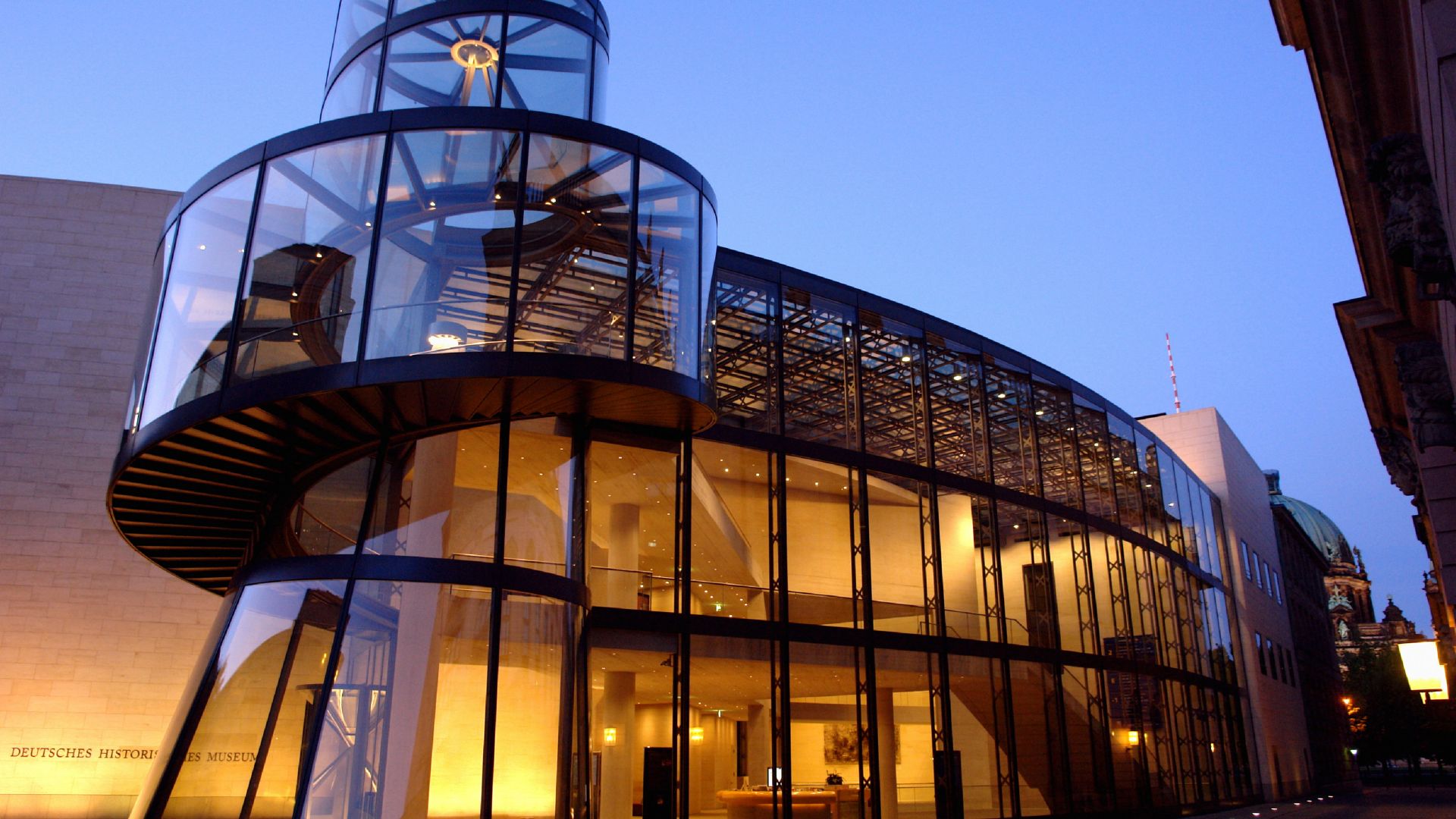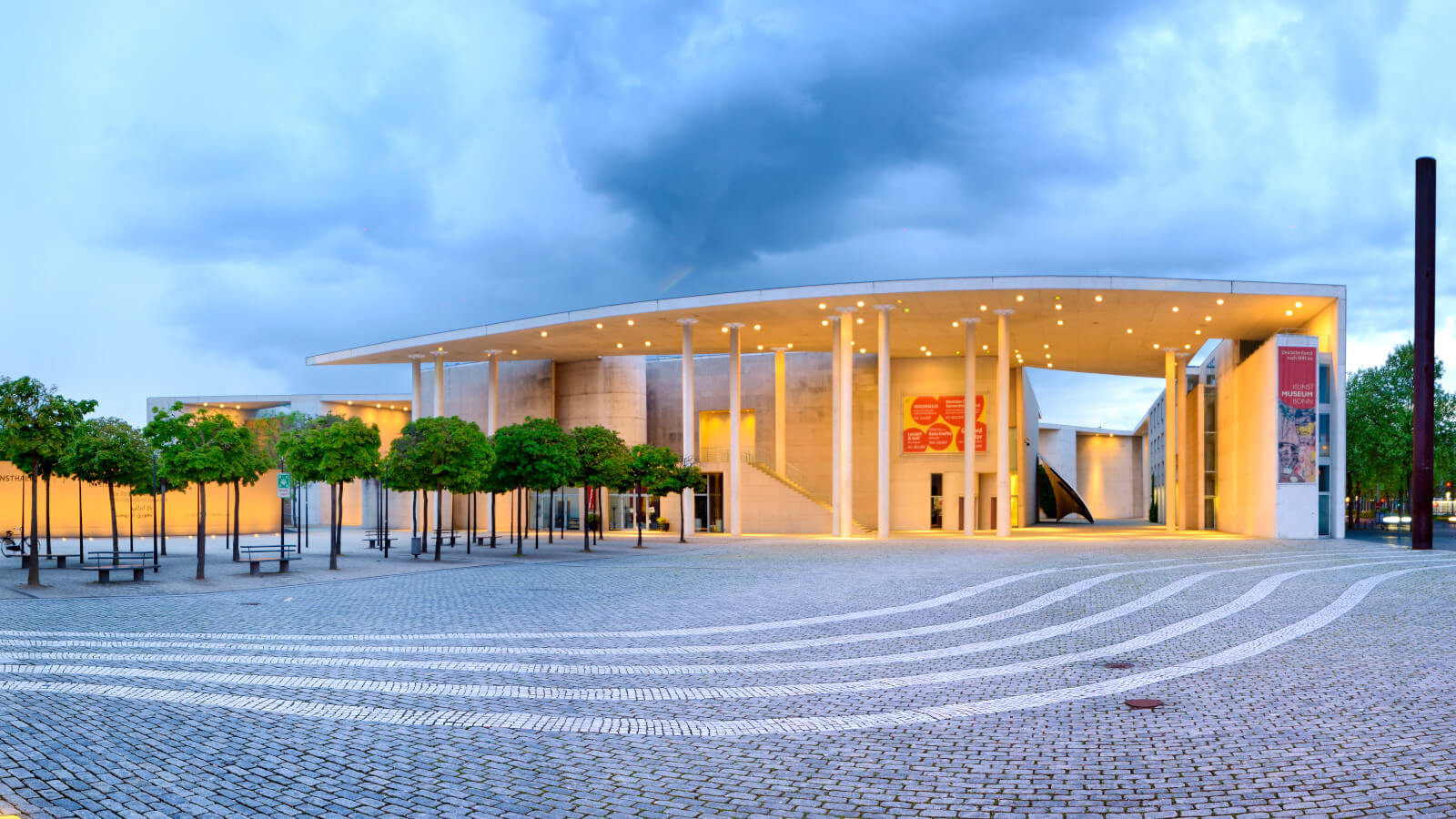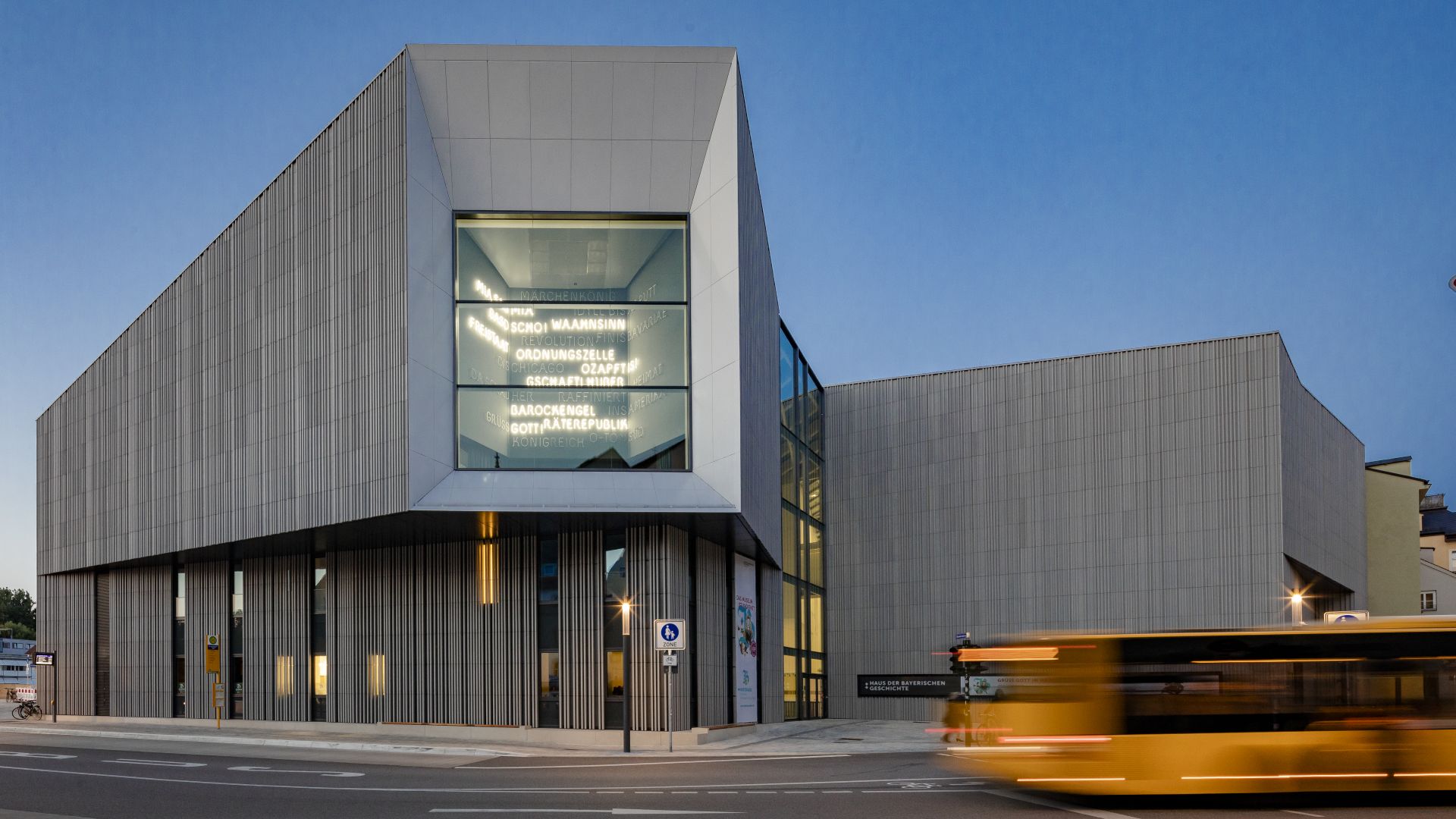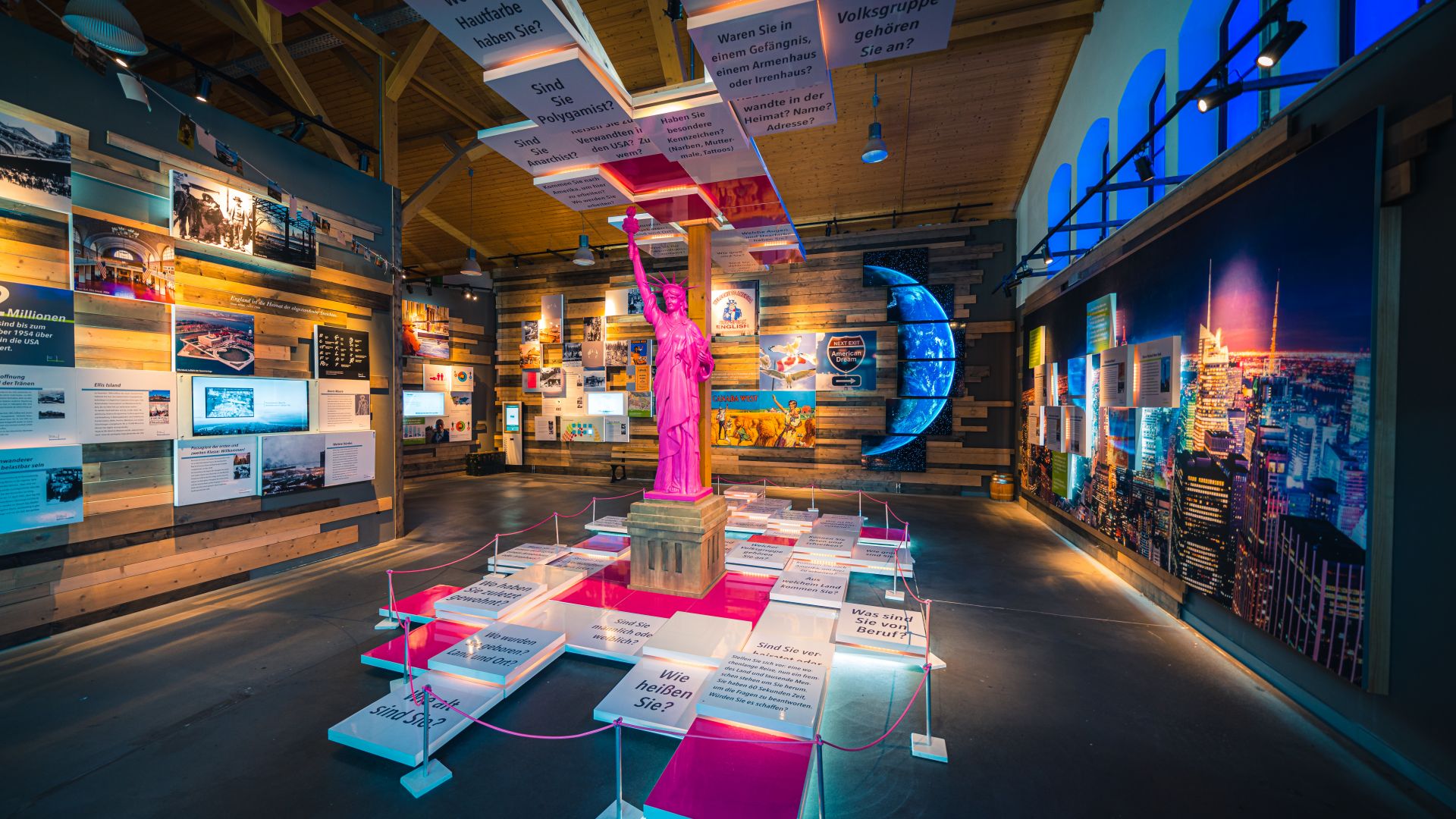Cities & Culture
History Museums: looking back, looking forward
History often has the reputation of being boring, especially among younger people. Many museums prove that this doesn't have to be the case by presenting the past in an exciting way, with innovative exhibition concepts as well as modern and interactive teaching methods.
German Historical Museum: number one house of German history
 Berlin: Modern exhibition building of the German Historical Museum
©Lookphotos (Jürgen Stumpe)
Berlin: Modern exhibition building of the German Historical Museum
©Lookphotos (Jürgen Stumpe)
How could former German Chancellor Helmut Kohl have dreamed, in 1987, that his passion project would one day become one of the largest history museums in the whole world? That, in the years between the signing of its founding documents and its opening in 1990 alone, history would flip entirely – the keyword being reunification? Even though the "government gift" for Berlin's 750th birthday was controversially discussed beforehand. The mission of the museum, which has moved into the oldest building on the boulevard Unter den Linden, is to be a "place of enlightenment and understanding about the common history of Germans and Europeans" and is also very well received by the public, not least thanks to its cinema, library and permanent exhibition, "German History in Images and Testimonies". From knights' armour and uniform tunics from the 18th century to election posters from the Weimar Republic and an original piece of the Berlin Wall, thousands of exhibits used to provide an insight into 1,500 years of Germany. Used to? The historic armoury with its many rooms is currently undergoing renovations, to be completed in 2025. However, the modern Pei Building next door remains open for events and temporary exhibitions. The object database, which can be used for online research, is still available and is the most comprehensive of all museums in Germany.
House of History: what happened after the Second World War?
 Bonn: art museum
©DZT (Francesco Carovillano)
Bonn: art museum
©DZT (Francesco Carovillano)
The Federal Republic of Germany has sweetened Bonn's loss of capital-city status with the Museum Mile near the Federal Quarter, which was the home of parliament and government until 1993. The Zoological Research Museum Alexander Koenig provides insights into the earth's ecosystems; the Kunstmuseum Bonn is an important home of contemporary art, with works by Beuys and more; the Bundeskunsthalle is a unique place of art, culture and science, and the Deutsches Museum Bonn is developing into an exciting and entertaining information forum on the future topic of artificial intelligence. However, the most popular – and this is certainly not only due to its free admission – is the Haus der Geschichte in Bonn, opened in 1994. However, this is not about the history of the city, but that of the Federal Republic of Germany. To be precise, from 1945 to present day. 160 interactive media stations with film and audio documents, as well as more than 7,000 exhibits, provide an enjoyable and thought-provoking journey through time and include an original cinema hall from the 1950s, a tank from the 17 June 1953 uprising, benches from the old assembly room and Willy Brandt's Nobel Prize certificate. Apart from modern school education programmes and audio guides that can be downloaded onto smartphones, very recent exhibits such as an vial from the first COVID-19 vaccine batch prove that history can also be very current.
The House of Bavarian History: 200 years of Bavaria at a glance
 Regensburg: Museum Haus der Bayerischen Geschichte in the evening
©DZT (Frank Blümler)
Regensburg: Museum Haus der Bayerischen Geschichte in the evening
©DZT (Frank Blümler)
Once upon a time, the four-metre-high lion, the symbolic animal of Bavaria, roared in front of the Löwenbräu tent at the Oktoberfest; now he stands in the giant, light-flooded foyer of the "House of Bavarian History", opened in 2019, and invites visitors to stay a while with his friendly "Grüß Gott" greeting. The panorama room offers another free teaser. The humorous 360-degree film on the topic of "What happened before", i.e. from the Romans to 1800, implemented with state-of-the-art media technology, will whet your appetite for the permanent exhibition. Here, the more than 200-year history of Bavaria, from its time as a kingdom to the 21st century, is presented with the help of around 1,000 exhibits and modern multimedia stations. The chronological tour is supported by eight cultural cabinets that question cultural phenomena and clichés in the broadest sense that are particularly associated with Bavaria – from dialect and religion to festivals and nature. These insights are enhanced by special exhibitions, and the outdoor steps under the golden eight-metre wall are a great place to go in good weather to digest your experiences, with a view of the Danube and the colourful hustle and bustle on the Marc Aurel riverbank.
Emigration Museum BallinStadt: concentrated migration history
 Hamburg: The Emigration Museum BallinStadt
©Michael T. Meyers
Hamburg: The Emigration Museum BallinStadt
©Michael T. Meyers
Between 1850 and 1939, Hamburg was the "gateway to the world" for more than five million European emigrants fleeing political and religious persecution or simply escaping a life of poverty and hunger. The "BallinStadt", which opened in 2007 on the site of the former emigrant halls and was expanded to 2,500 square metres in 2016, has set out to shed light on this topic. The name commemorates the general director of Hapag, Albert Ballin, who had those exact mass accommodations built for migrants. Three original reconstructed living and sleeping pavilions, where visitors can relive the stories of European emigrants from 1600 to the present day, convey exactly what they looked like back then. The interplay of historical exhibits and interactive exhibition elements, such as "talking dolls", also inspires younger visitors, who will find numerous pushable buttons, their own storytelling dolls, and information on the ocean crossing in a tunnel on the ship. The stylish arrival by water is also thrilling. Launches run from the landing piers to the specially equipped jetty, "auf der Veddel".